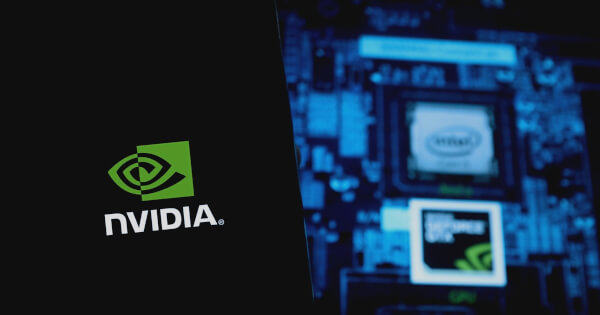NVIDIA Powers Las Vegas Sphere with Cutting-Edge Display Technology
Caroline Bishop Jul 10, 2024 02:42
NVIDIA's advanced GPUs and networking solutions power the Las Vegas Sphere, delivering unmatched immersive experiences with high-resolution displays.

The Las Vegas Sphere, a revolutionary entertainment venue, is captivating audiences with its massive and immersive LED displays, both inside and outside the structure. According to the NVIDIA Blog, this technological marvel is powered by NVIDIA’s advanced graphics and networking solutions, ensuring synchronized and high-quality visual experiences.
Technological Marvel Behind the Sphere
Inside the Sphere, around 150 NVIDIA RTX A6000 GPUs drive the stunning visuals on floor-to-ceiling, 16x16K displays. The exterior, known as the Exosphere, features 1.2 million programmable LED pucks, making it the world’s largest LED screen. NVIDIA’s technology ensures that all display panels act as one synchronized canvas, providing a seamless visual experience.
Key to this synchronization are NVIDIA BlueField DPUs and NVIDIA ConnectX-6 Dx NICs. These components, along with NVIDIA DOCA Firefly Service and NVIDIA Rivermax software, deliver robust network connectivity and media streaming. This technology supports the Sphere’s high-resolution visuals, concert-grade sound, haptic seats, and atmospheric effects, such as wind and scents.
Alex Luthwaite, senior vice president of show systems technology at Sphere Entertainment, highlighted the importance of NVIDIA’s technology in realizing their vision. “Sphere is captivating audiences not only in Las Vegas but also around the world on social media, with immersive LED content delivered at a scale and clarity that has never been done before,” Luthwaite said.
Notable Performances and Experiences
Since its opening, the Sphere has hosted a variety of events, including a 40-show run by rock band U2. Other notable shows include “The Sphere Experience” featuring Darren Aronofsky’s “Postcard From Earth,” a multisensory cinematic experience showcasing the venue’s advanced technologies.
Named one of TIME’s Best Inventions of 2023, the Sphere continues to push boundaries in entertainment. It hosts original Sphere Experiences, concerts, residencies by world-renowned artists, and premier corporate events.
Behind the Screens: Visual Technology Fueling the Sphere
Sphere Studios, located in Burbank, California, creates video content that is streamed in real-time to NVIDIA RTX A6000-equipped workstations at the Sphere. This setup achieves unprecedented performance, delivering three layers of 16K resolution at 60 frames per second. NVIDIA Rivermax software accelerates media streaming, enabling direct data transfers to and from the GPU, eliminating jitter, and optimizing latency.
NVIDIA BlueField DPUs enhance precision timing through the DOCA Firefly Service, synchronizing clocks in the network with sub-microsecond accuracy. Nir Nitzani, senior product director for networking software at NVIDIA, emphasized the collaboration’s impact, stating, “The integration of NVIDIA RTX GPUs, BlueField DPUs, and Rivermax software creates a powerful trifecta of advantages for modern accelerated computing, supporting the unique high-resolution video streams and strict timing requirements needed at Sphere.”
Well-Rounded: From Simulation to Sphere Stage
To develop new immersive content, Sphere Entertainment launched Sphere Studios, which includes a quarter-sized version of the Sphere screen, known as the Big Dome. This facility serves as a specialized screening and production lab. The Big Sky camera system, developed by Sphere Studios, captures uncompressed 18K images from a single camera, eliminating the need to stitch multiple camera feeds together. The studio’s custom image processing software runs on Lenovo servers powered by NVIDIA A40 GPUs.
The A40 GPUs also support creative work, including 3D video, virtualization, and ray tracing. The team uses various applications, such as Unreal Engine, Unity, Touch Designer, and Notch, to develop visuals for different shows.
For more details, visit the NVIDIA Blog.
Image source: Shutterstock.jpg)
